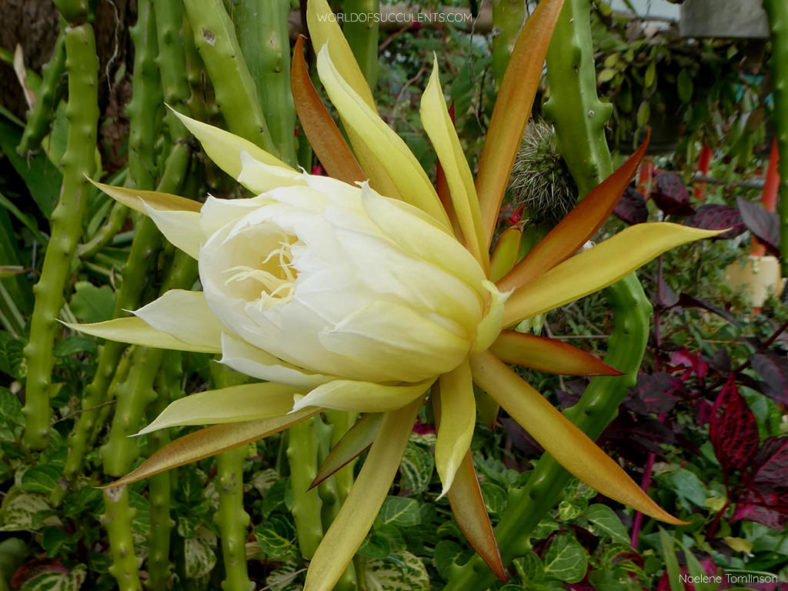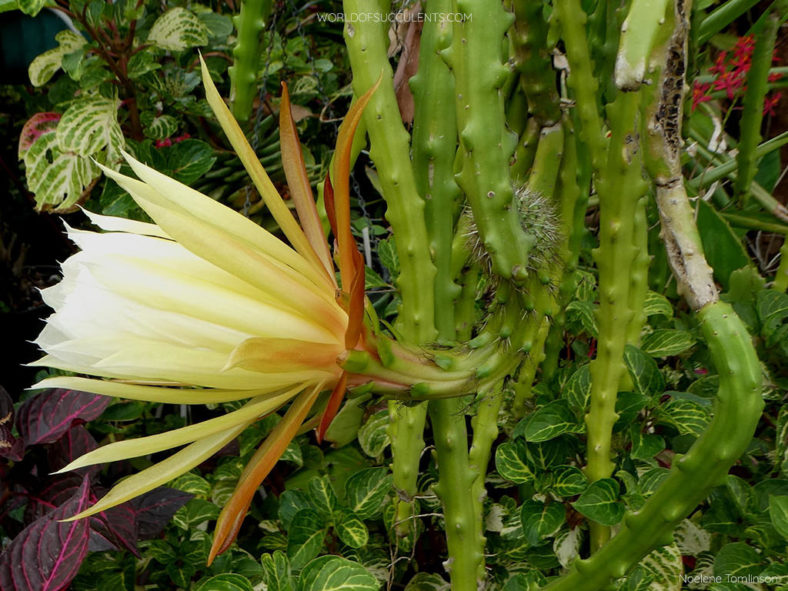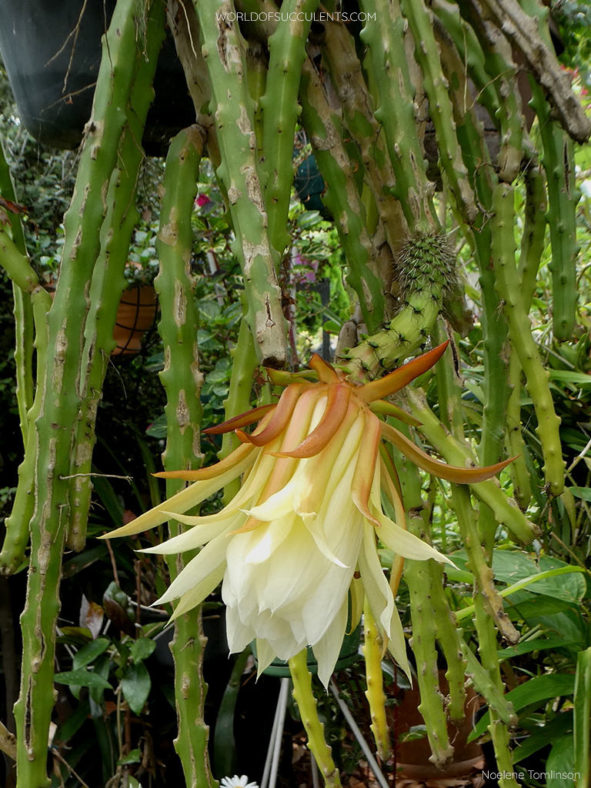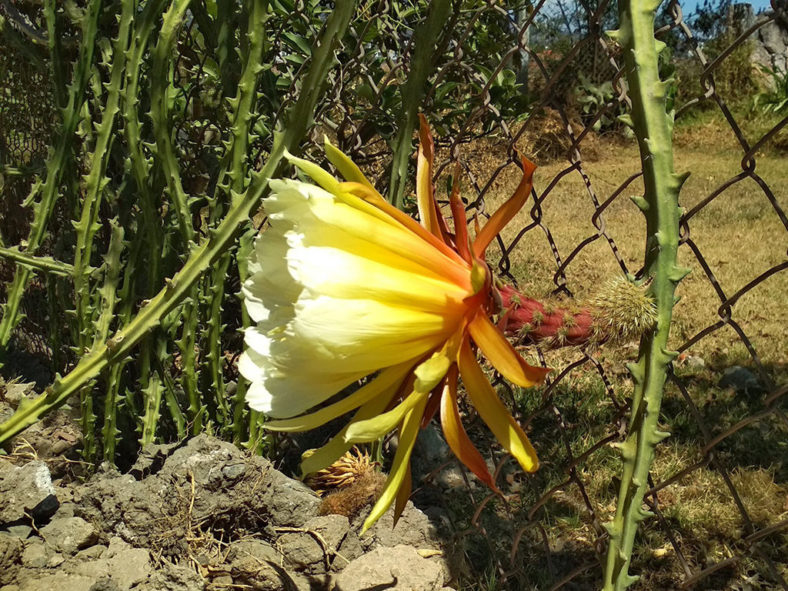Scientific Name
Selenicereus hamatus (Scheidw.) Britton & Rose
Synonym(s)
Cereus hamatus, Cereus reptans
Scientific Classification
Family: Cactaceae
Subfamily: Cactoideae
Tribe: Hylocereeae
Genus: Selenicereus
Etymology
The specific epithet "hamatus (pronounced ham-AH-tus)" means "hooked" and refers to the hooked tubercles on the stems.
Origin
Selenicereus hamatus is native to Mexico. It is only known in cultivation.
Description
Selenicereus hamatus is a very vigorous cactus with clambering or sprawling, light green stems with usually four ribs lined with knobby tubercles beneath the tiny brownish or black areoles. The stems can grow up to 39.4 feet (12 m) long and 0.9 inches (2.2 cm) thick, branching and producing few aerial roots. The spines are whitish, bristle-like, and can measure up to 0.2 inches (0.5 cm) long. The lower or central spines are usually brown or black. Each areole bears 5 to 6 spines.
The flowers are nocturnal and strongly scented and appear one by one in spring. They can reach up to 16 inches (40 cm) in length and 12 inches (30 cm) in diameter. The outer tepals are reddish-purple outside and greenish-yellow to chrome-yellow inside, while the inner tepals are white. The fruits are green or yellow and densely covered with yellowish spines. They are oval and can grow up to 4 inches (10 cm) long and 3.2 inches (8 cm) in diameter.

How to Grow and Care for Selenicereus hamatus
Light: This cactus likes full sun. It can handle partial shade but thrives in direct sunlight during the summer. A sunny window is a good spot to grow S. hamatus indoors. Rotate the pot a quarter turn every week or two to encourage balanced growth. If possible, get your cactus outdoors from spring to fall.
Soil: S. hamatus does not like "wet feet" and needs to be grown in well-draining soil. You can use commercial soil mixes for cacti or make your own.
Hardiness: During the active growth period, this cactus likes warm temperatures, while in winter, it likes cooler temperatures. S. hamatus can withstand temperatures as low as 30 °F (-1.1 °C). USDA Plant Hardiness Zones 10a to 11b, 30 to 50 °F (-1.1 to 10 °C).
Watering: Water thoroughly from spring to fall, but allow the soil to dry out before watering again. With the arrival of fall, gradually reduce the watering frequency. When S. hamatus is dormant in winter, give it just enough water to prevent shrinking.
Fertilizing: During its growing season, this cactus likes regular fertilizing. A balanced, water-soluble fertilizer, diluted to 1/4 strength, can be added to each watering. A 10-10-10 fertilizer is ideal. Instead of making a solution of water and fertilizer, there are also dry fertilizers. Do not fertilize during the winter.
Repotting: While S. hamatus is young, it is recommended to repot each year in early spring. Once it matures, repot when your cactus is outgrowing its pot.
Propagation: Using stem cuttings is the easiest method to propagate S. hamatus because seed propagation is a slow process. Take cuttings during the growing season. Spring and summer are the best time to sow the seeds.
Learn more at How to Grow and Care for Cereus.
Toxicity of Selenicereus hamatus
S. hamatus is non-toxic to humans or animals.
Links
- Back to genus Selenicereus
- Succupedia: Browse succulents by Scientific Name, Common Name, Genus, Family, USDA Hardiness Zone, Origin, or cacti by Genus
Photo Gallery


